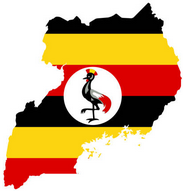Book Appointment Now
A comprehensive health plan when elected President of Uganda
Health Manifesto for Uganda
By Malinga Gerald (Spongeman)
Introduction
Health is wealth and a cornerstone of a vibrant, resilient economy. Yet Uganda’s health system continues to face systemic barriers that compromise access, quality, and equity of care. Drawing on official government reports, academic studies, and stakeholder analyses, this Manifesto outlines the principal challenges and proposes targeted interventions to accelerate progress toward Universal Health Coverage.
I. Key Challenges
1. Frequent stock‑outs of essential medicines
A cross‑sectional study across 128 health facilities found that 84% reported stock‑outs of essential medicines and supplies in the past six months, primarily due to funding delays, demand surges, and logistical gaps.
2. Commercialisation of “free” public services
Despite policy mandating free maternal and child health services, some government hospitals charge for antenatal care and even Caesarean sections, imposing undue financial burdens on expectant mothers .
3. Dilapidated infrastructure
The 2022/23 Annual Health Sector Performance Report documents critical deficits in operating theatres, maternity wards, and sanitation facilities, undermining service delivery and patient safety.
4. Critical human resource shortages
Uganda has only one doctor per 7,272 people and one nurse/midwife per 36,810 people, with 70% of doctors concentrated in urban areas, leaving rural populations severely underserved.
5. High infant mortality
In 2022, the national infant mortality rate was 30 deaths per 1,000 live births, among the highest in the East African region .
6. Elevated maternal mortality
Maternal deaths remain unacceptably high, with an estimated 280 deaths per 100,000 live births (approximately 2 per 1,000 live births) in 2022.
7. Privatisation of critical supplies
Items such as surgical gloves and high‑cost drugs are often redirected from public facilities to private clinics, exacerbating out‑of‑pocket expenditures for patients.
8. Conflict of interest in referrals
Reports indicate some public‑sector doctors refer patients to their private practices or clinics, creating perverse incentives and undermining trust in government facilities.
9. Unaffordable specialist care
Orthopaedic, cardiac, and neurosurgical services are largely inaccessible to ordinary Ugandans due to high costs in both public and private sectors.
10. Brain drain of specialised personnel
Inadequate remuneration and career progression pathways force many specialists to seek employment abroad, depleting the domestic skills pool .
11. High private‑sector fees
To fill gaps in government services, private providers charge steep fees, driving vulnerable families into poverty.
II. Strategic Interventions
1. Deploy one midwife per village
Assign a qualified midwife to each of Uganda’s ≈70,626 villages, ensuring around‑the‑clock skilled birth attendance at the community level .
2. Ensure a minimum of three VHTs per village
Scale up Village Health Teams to at least three trained volunteers per village for health promotion, disease surveillance, and linkage to referral services .
3. Revitalize the Uganda Pharmaceutical Industry
Reactivate and incentivize local drug manufacturing to reduce dependency on imports, lower drug prices, and enhance supply‑chain resilience.
4. Guarantee free public healthcare
Legislate and fund truly free maternal, child, and primary care services at all government facilities, removing user fees and informal charges.
5. Enact and operationalize National Health Insurance
Pass the NHIS law and establish a single‑payer system to pool risks, subsidize the poor, and provide a defined benefits package to all Ugandans .
6. Modernize health workforce structures
Create career cadres and competitive salary scales for under‑represented specialties (e.g., radiology, biomedical laboratory technology), ensuring mandatory service in public facilities.
7. Establish a National DNA Index
Develop a centralized database for genetic screening (e.g., sickle cell, cancer markers), forensic investigations, and paternity testing, strengthening preventive and diagnostic capacities.
8. Introduce parish‑level Tuk-tuk ambulances
Deploy cost‑effective, three‑wheeled ambulances in every parish to provide rapid emergency transport for obstetric and critical patients.
Conclusion
This Health Manifesto consolidates evidence‑based insights from government, WHO, UNICEF, and independent studies to chart a clear path toward a robust, equitable health system.Through coordinated implementation of these interventions, Uganda can dramatically reduce mortality rates, eliminate catastrophic health expenditures, and secure the “health is wealth” promise for every citizen.




